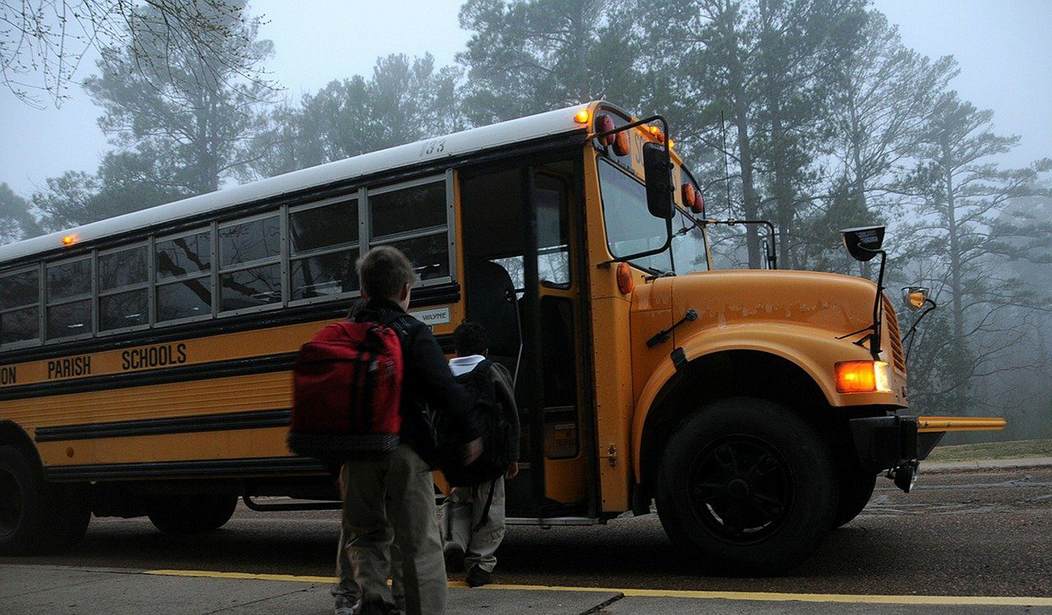The shooting in Arlington, TX has been the subject of some discussion here at Bearing Arms, and understandably so. A shooting at a school is real news, even if some don’t seem to think so. Our schools matter, and so we are going to listen when something happens in one of them.
In the case of Arlington, the shooter was reportedly the victim of bullying. It was apparently so bad that he felt his only avenue was to bring a gun to school and to shoot those who tormented him.
Now, that’s not a good reason to use a gun. I’ve dealt with bullying myself back in the day, so while I understand the temptation, I also understand that it’s not the correct response. Whopping the bullies’ butts? Perfectly acceptable. Shooting people, not so much.
Yet over at The Federalist, they raise a good point about our schools.
As with other shootings, gun-control advocates have used this tragedy as an occasion to call for more laws against gun ownership. However, considering that the shooter broke the law by possessing a firearm in the first place, it’s difficult to see how making more gun-control laws would make a difference.
Instead of guns, what merits more attention in this matter is the issue of bullying, which seems to be an ongoing problem in large public schools. In various forms and places (online and at school), students are not getting along and many are being victimized by unhappy kids.
Before considering what schools are doing (or not doing) to combat bullying, it should be said from the outset that parents have the biggest responsibility to teach their children how to confront bullies and how not to become bullies themselves. At the very least, this means not excusing their misbehavior and not throwing them homecoming parties while their child’s victims are still in the ICU, as the shooter’s parents did.
Less Discipline, Less Learning
For their part, educators need to do more with discipline. Besides offering scripted advisory lessons on bullying and depression, many school leaders have wrongly addressed bullying by relaxing standards on all fronts to relieve pressure on supposedly overburdened students.
Students who misbehave are often no longer suspended or given detention, but are given a warning and sent back to class. Moreover, many of those classes include long stretches of free time and academic expectations are incredibly low, meaning failure is virtually impossible.
District leaders benefit enormously by reducing the number of suspensions, expulsions, and failures, and have fewer struggling students to remediate and reform. By changing the standards, their job becomes much easier and they look strong and effective in the process.
Unfortunately, this loosening approach has made so many otherwise decent public schools dangerous and chaotic. Bullying and rowdiness have become more commonplace, similar to Philadelphia schools after their school leaders banned suspensions.
The author, Auguste Meyrat, is an English teacher in the Dallas area, so he probably has a pretty good inkling of what’s taking place. From what I know about bullying, too much free time is a factor.
Look, bullies are going to bully. Educators can only do so much to combat that, no matter how much they try. You can teach a kid that bullying is bad, but is that really going to change the behavior? Probably not, at least in many cases.
So what you can do is try to minimize the opportunity for bullying.
Free time in class actually makes it easier for the bullies to find opportunities to harass their targets. If they’re busy working–or, at least, trying to look like they’re working–then they can’t harass their victims.
Meyrat has more to say, and I urge you to read what he wrote because, frankly, I think he’s right.
When my eldest was in public school, he got picked on. At one school, I told the vice principal that they’d either do something about it or I’d have my son take care of it. From then on, he had a shadow…at that school.
Other schools? Not so much.
In middle school, it became clear that he had no alternative, so I told him to defend himself. He did and ended that kid’s bullying attempts. Others tried until one day he ended up in a fight where teachers had to pull him off the other kid. He was never messed with again.
Teachers, despite the fact that some may want to do something, can only do so much. There will be opportunities for students to bully others. It’s up to the school to both minimize this and to try and get involved when it happens.
Failure to do so results in bad things.
Yes, those bad things may include a student bringing a gun to school because they honestly don’t know what else to do. There’s no excuse to do so, especially when you intend to shoot four people, but the schools aren’t absolved of responsibility for letting a situation get to that point.
It’s not even the teachers, either, but the administrators who shoulder the blame. It’s time parents stepped up and demanded better.








Join the conversation as a VIP Member